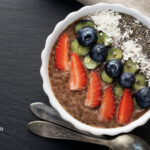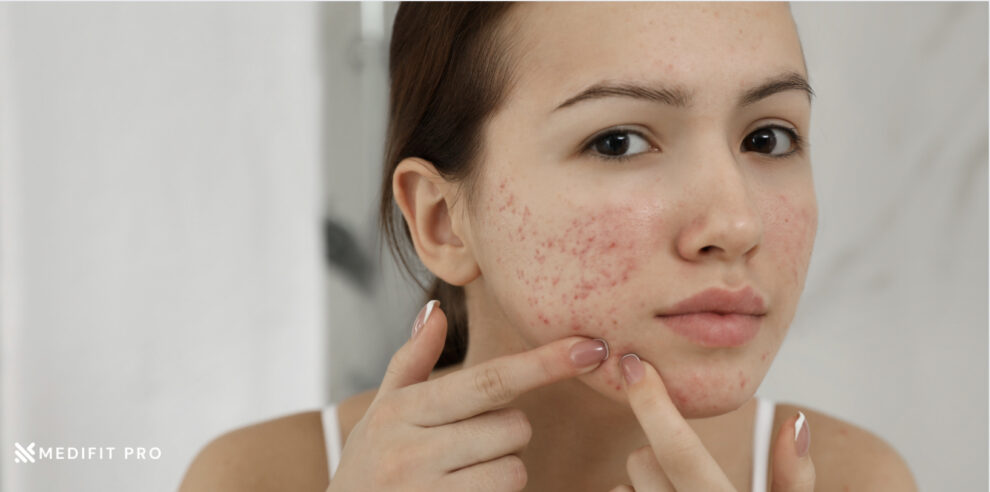Understanding the Root Causes and Available Treatments
Acne is a common skin condition that affects millions of people around the world. It is characterized by the appearance of pimples, blackheads, and whiteheads on the face, neck, chest, and back. While it is often associated with teenagers, acne can affect people of all ages. In this article, we will explore the different types of acne, their causes, and the various treatment options available.
Types of Acne
Acne can manifest in different forms, each with their own unique characteristics. The most common types of acne include:
• Whiteheads: Small, white bumps that appear on the skin. They are caused by a build-up of oil and dead skin cells that become trapped in the pores.
• Blackheads: Similar to whiteheads, but with a black or dark appearance. They occur when the pore becomes clogged with oil and dead skin cells, but the surface remains open.
• Pimples: Also known as papules or pustules, these are red, inflamed bumps that are often filled with pus. They occur when the hair follicles become clogged with oil and dead skin cells, leading to bacterial growth.
• Cysts: These are large, painful, and often deep-seated lumps that can cause scarring. They occur when the hair follicle becomes infected and inflamed, leading to a build-up of pus.
Causes of Acne in Males and Females
Acne is caused by a combination of factors, including genetics, hormones, and lifestyle choices.
◦ Hormones: Hormones play a significant role in the development of acne. In males, the main hormone associated with acne is testosterone, which increases during puberty and can lead to increased oil production. In females, acne is often linked to hormonal fluctuations during the menstrual cycle, pregnancy, and menopause.
◦ Genetics: Acne is a common condition that runs in families. If your parents or siblings had acne, you are more likely to develop it as well.
◦ Lifestyle choices: Certain lifestyle choices can also contribute to the development of acne. For example, eating a diet high in processed foods, sugar, and dairy can increase the risk of acne. Additionally, not properly cleansing the skin or using skincare products that are too harsh can lead to clogged pores and breakouts.
Treatment Options
Acne can be treated using a combination of over-the-counter products, prescription medications, and lifestyle changes.
Over-the-counter products:
• Topical creams and gels that contain benzoyl peroxide or salicylic acid can be effective in reducing the number of pimples and blackheads.
• Facial cleansers with alpha hydroxy acids (AHAs) and beta hydroxy acids (BHAs) can exfoliate dead skin cells, unclog pores, and reduce inflammation.
Prescription Medications:
• Oral antibiotics, such as tetracyclines, can help to reduce the number of pimples and prevent new ones from forming.
• Isotretinoin is a powerful medication that is taken orally and is effective in treating severe, cystic acne. It works by reducing the production of oil, preventing the growth of bacteria, and reducing inflammation.
Dermatological procedures:
1. Chemical peels: Chemical peels use a solution to remove the outer layers of skin, promoting cell turnover and reducing the appearance of acne scars.
2. Microdermabrasion: A mechanical exfoliation procedure that removes dead skin cells and unclogs pores to reduce acne.
3. Light therapy: Blue light therapy kills acne-causing bacteria, while red light therapy reduces inflammation and promotes healing.
4. Laser therapy: Lasers such as CO2 and pulsed-dye lasers can be used to reduce the appearance of acne scars and improve skin texture.
5. Extractions: During a dermatology appointment, a provider can perform manual extractions to remove blackheads and whiteheads.
6. Injections: Corticosteroid injections can be used to reduce inflammation and swelling in severe acne breakouts.
Lifestyle Changes:
• Eating a healthy, balanced diet that is low in processed foods, sugar, and dairy.
• Drinking plenty of water and staying hydrated. To know more about hydration, click Sip to Health
• Exercising regularly to help reduce stress and promote good overall health. For help to stay motivated for exercise, you can read How to Stay Motivated for Exercise
• Avoiding touching or squeezing pimples, as this can lead to scarring and further breakouts.
In conclusion , acne is a common skin condition that can affect people of all ages. While it is often associated with teenagers, it can also affect adults. The different types of acne include whiteheads, blackheads, pimples, and cysts, each with their own unique characteristics. The causes of acne include hormones, genetics, and lifestyle choices.
It’s important to consult a dermatologist or skincare professional for personalized treatment plan if the condition persists or becomes severe. It’s also important to practice good skincare habits such as cleansing and moisturizing the skin regularly, and using gentle, non-comedogenic products. With the right treatment and lifestyle changes, it is possible to control and manage acne and achieve clearer, healthier skin.
Reference
American Academy of Dermatology (AAD): https://www.aad.org/public/diseases/acne-and-rosacea






















Recent Comments